JULY2023,`50




PUBLIC HEALTH
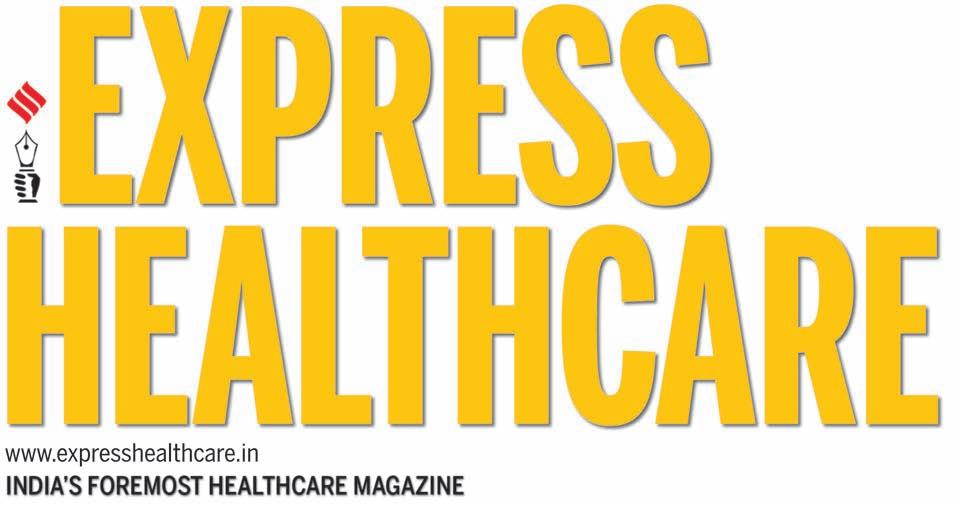

No one organisation, networkor countryis enough to effectively fight against viral pathogens


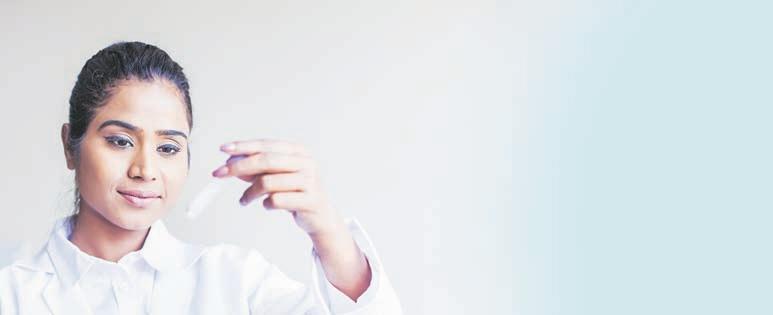

VOL.16 NO 6 PAGES 48

























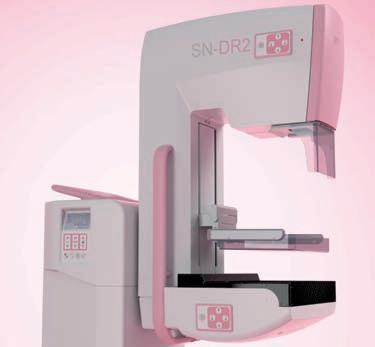







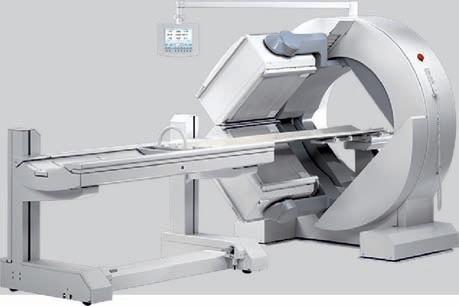





engagedintransformingmanagementeducationforhealthcaresector.
HealthcarehasbecomeoneofthelargestsectorsoftheIndianeconomyintermsofbothrevenueand employment,creatingseveralopportunitiesforstudentstoworkwithgovernment,for-profitandnot-for-profit organisations.Thehealthcareindustrycomprisescentral/stategovernment,publichealth institutions/programmes,developmentpartners,public/privatehospitals,pharmaceuticalcompanies,health insurance,healthcareresearchandconsulting,medicaldevices,diagnostic,digitalhealth,andCSRfoundations.
CoursesOfferedByIIHMRUniversity
MBAProgrammes
MBA(HospitalandHealthManagement)
MBA(PharmaceuticalManagement)

MBA(DevelopmentManagement)
ApplywithCAT/XAT/NMAT/MAT/CMAT/ATMA/ IIHMRU-MATscore

ExecutiveProgrammes forWorkingProfessionals

MasterofPublicHealth(Executive)
MasterofHospitalAdministration(Executive)
Toknowmoreaboutadmissions 1,PrabhuDayalMarg,NearSanganerAirport,Jaipur-302029|E-mail:admissions@iihmr.edu.in|Website:www.iihmr.edu.in :+91-91459-89952,+91-93588-93199,+91-90019-19777 Jaipur ADMISSIONOPEN2023
isaleadingpostgraduateresearchuniversity
IIHMRUniversity,Jaipur
Merit Scholarships/ Freeshipsworth Rs.1.5Crore offeredfor MBA Programmes. ForAdmission ScanthisQRCode +919145989952/9358893199 ForRegistrations,pleasecall: GuidedCampusToureveryday includingSaturdaysandSundays between10:30amto5:00pm


















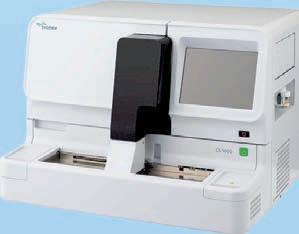




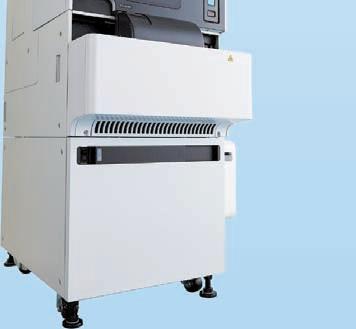

CONTENTS
Chairman of the Board
ViveckGoenka
Sr.Vice President-BPD
Neil Viegas
Vice President-BPD
Harit Mohanty
Editor
Viveka Roychowdhury*
Editorial Team
Lakshmipriya Nair
Kalyani Sharma
DESIGN
Art Director
Pravin Temble
Senior Designer

Rekha Bisht
Senior Artist
Rakesh Sharma
Marketing Team
Rajesh Bhatkal
Ashish Rampure
Debnarayan Dutta
Production Co-ordinator
DhananjayNidre
Scheduling & Coordination
Pushkar Waralikar
CIRCULATION
Mohan Varadkar
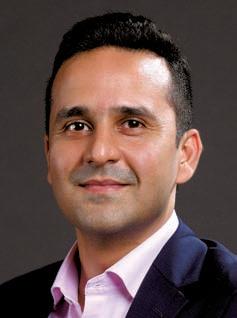
P14: INTERVIEW
DR ABHIJITPAUL Medical Director, Practo

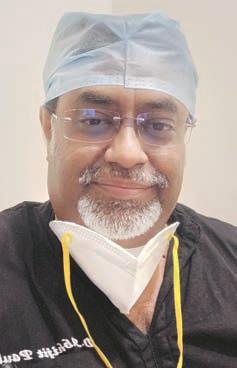
24 THE FUTURE OF DIAGNOSTIC LABS: ENHANCING EFFICIENCYAND ACCURACYFOR BETTER PATIENT CARE



Pg
25 NO ONE ORGANISATION, NETWORKOR COUNTRYIS ENOUGH TO EFFECTIVELYFIGHT AGAINSTVIRAL PATHOGENS
P27: INTERVIEW
NIKOLAJ GILBERT President and CEO, PATH
July2023 EXPRESS HEALTHCARE 11
Express Healthcare® Regd.With RNI No.MAHENG/2007/22045.Postal Regd.No.MCS/162/2022 - 24.Printed and Published byVaidehi Thakar on behalf of The Indian Express (P) Limited and Printed at The Indian Express Press,Plot No.EL-208,TTC Industrial Area,Mahape,Navi Mumbai-400710 and Published at Mafatlal Centre,7th floor,Ramnath Goenka Marg,Nariman Point,Mumbai 400021. Editor: Viveka Roychowdhury.* (Editorial & Administrative Offices: Mafatlal Centre,7th floor,Ramnath
Marg,Nariman Point,Mumbai
Responsible for selection of news under the PRB Act.Copyright ©
Indian Express
Ltd.All
Reproduction in anymanner,electronic
otherwise,in
in
Goenka
400021) *
2017.The
(P)
rights reserved throughout the world.
or
whole or
part,without prior written permission is prohibited. HEALTHCARE IT
PUBLIC HEALTH COVER STORY
18
STRATEGY
Sunil SolomonGavin Cloherty
Protecting our health data
The alleged attack and data breach on the CoWIN platform has underlined yet again the vulnerability of health data and the need to protect citizens' privacy. The CoWIN platform has COVID vaccination details and as such is a rich repository of health data and contact information of all Indian citizens who needed to register on the platform in order to get their COVID vaccines.
This is thus a gold mine of information and it is but natural that there have been quite a few reports of data breaches in the past as well, most recently at AIIMS, and ICMR. This time, Twitter posts claimed that by using a Telegram BOT, one could access the personal data of vaccinated citizens by simply passing the mobile number or Aadhaar number of a beneficiary.
On June 12, the Union Health Ministry clarified that all such reports were ''without any basis and mischievous in nature.'' Can we as citizens, trust the Ministry's reassurance that the Co-WIN portal is "completely safe with adequate safeguards for data privacy"? Even though the release listed out security measures that are in place on Co-WIN portal, from Web Application Firewall, Anti-DDoS, SSL/TLS, regular vulnerability assessment, Identity & Access Management etc, it is scary to think that our identity details can be so easily accessed. Only OTP authentication-based access of data is provided and as per the Health Ministry statement, all steps have been taken and are being taken to ensure security of the data in the CoWIN portal.
While the development team of Co-WIN confirmed that there are no public APIs where data can be pulled without an OTP, what is worrying it the admission that some APIs have been shared with third parties such as ICMR for sharing data. It is also reported that one such API has a feature of sharing the data by calling using just a mobile number of Aadhaar. As per the health ministry release, this API is very specific and the requests are only accepted from a trusted API which has been white-listed by the Co-WIN application.
While the Union Health Ministry has requested the Indian Computer Emergency Response Team (CERT-In) to look into this issue and submit a report, CERT-In’s initial report has pointed out that backend database for Telegram bot was not directly accessing the APIs of CoWIN database. In addition, an internal exercise has been initiated to review the existing security measures of CoWIN.
There are reports that past data breaches were of individual health workers and the data compromised was restricted to these health workers, with the backend remaining safe. One hopes that unlike in the past, when the health ministry did not reveal the conclusions of previous investigations into health data
breaches, there is more transparency now.
Commenting on the CoWIN platform cyber attack, Pavan Choudary, Chairman, Medical Technology Association of India (MTaI) reasoned that health data is the most monetisable data for hackers. According to him, the details which have been stolen (as per media reports), are not the ones that can be used to extort or coerce. Data regarding sexual and terminal diseases is what is used usually for coercive exploitation. However, he cautions that if this breach is real, it is an alarm bell which may augur the possibility of identity thefts and emphasises that the government needs to ringfence all the data reservoirs. He concludes that the recent attacks on AIIMS, ICMR, and now the Co-WIN app, make the passage of the Data Protection Bill becomes ever more urgent.
The Union Cabinet's recent approval of the Digital Personal Data Protection Bill is thus a step in the right direction, provided concerns about personal privacy rights are properly addressed.

But will a Bill really protect our health data? The healthcare sector has been a laggard when it comes to going digital and even more lackadaisical at securitising its data. And today, the sector is paying for this oversight. Unfortunately, the real losers are citizens/patients.
The 2022 Threat Landscape Report by Tenable revealed that India’s healthcare sector was the second most targeted by cybercriminals, indicative of innovation outpacing cybersecurity in the industry. In addition, Cert-In in its latest study found that healthcare is among the fifth most-targeted industries by ransomware actors.
More evidence comes from the Verizon 2023 Data Breach Investigations Report (DBIR). As per the DBIR 2023, System Intrusion, Basic Web Application Attacks and Miscellaneous Errors represent 68 per cent of breaches in the healthcare vertical. While external threat actors account for 66 per cent of breaches, the report flags the rather high percentage of internal threat actors (35 per cent), which must give CIOs/CDIOs in the healthcare sector sleepless nights. The report warns that the insider threat in this industry cannot be discounted, as ‘this is also a sector in which we see evidence of collusion, multiple actors working together to make their breach dreams a reality.’
Thus proactively protecting our health data, be it on public portals like the CoWIN platform, or our health records with healthcare organisations like hospitals and diagnostics companies, should be top priority for all.
VIVEKA ROYCHOWDHURY Editor viveka.r@expressindia.com viveka.roy3@gmail.com
EDITOR’S NOTE EXPRESS HEALTHCARE July2023 12
The Union Cabinet's recent approval of the Digital Personal Data Protection Bill is a step in the right direction, provided concerns about personal privacy rights are properly addressed and healthcare organisations plan proactively to protect their data





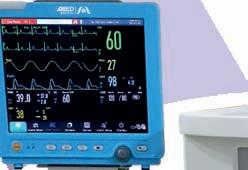



HEALTHCARE IT
Accreditation
Practo recently received QAI accreditation for its telehealth services,becoming the first digital healthcare company in India to receive this recognition. Dr
Abhijit Paul,Medical Director,

Practo in an interaction with Kalyani Sharma talks about the importance of accreditation in today’s transforming digital world and current status of telehealth market in India
priority and accreditation is one such way to do so, as it helps ensure:
◆ Quality enhancement: Accreditation provides an assurance that healthcare providers are meeting high standards of quality and safety in their operations. This becomes imperative in the digital world, where telemedicine and remote consultations are becoming more common, and patients rely on technology for their care. Accreditation ensures that the care provided is of high quality, regardless of the mode of delivery.
◆ Promotes transparency: Accreditation helps to build trust between healthcare providers and patients by providing transparency about the quality of care being provided. This is particularly important in the digital world, where patients may not have the same level of personal interaction with their providers as they would in-person.
◆ Encourages standardisation: With the rise of the usage of digital healthcare services, patients are increasingly relying on remote consultations and telemedicine, making it crucial that these services adhere to the same safety and quality standards as traditional in-person care.
requirements and standards to maintain the trust and confidence of patients and meet the requirements of regulatory organisations.
What are the benefits of QAI accreditation for Practo?
In healthcare, quality is of utmost importance. And at Practo, with quality as our cornerstone we are working towards our mission of making quality healthcare accessible and affordable to all. QAI is an ISQua certified accreditation body with global recognition and being recognised by this prestigious institute for our telehealth services serves as reflection of our commitment to quality. Overall, this helps boost confidence among all our stakeholders, and positively influences shareholder confidence while also encouraging others in the healthcare ecosystem to strive for similar accreditation. That said, the biggest beneficiary of this accreditation is the patient as it serves as a symbol of quality that encourages patients to make wellinformed decisions throughout their healthcare journey.
What is the need for accreditation in the medical care sector in today’s transforming digital world?
Accreditation is essential in
the medical care sector, especially in a rapidly evolving digital world. According to a MarketsandMarkets research, globally, the
telehealth and telemedicine market is projected to reach $285.7 billion by 2027. As telemedicine continues to grow, it is imperative that quality healthcare delivery is
◆ Regulatory compliance: Healthcare companies, whether digital or traditional, are subject to various laws and regulations to ensure patients safety, privacy, and ethical practices. Accreditation assists healthcare providers in meeting regulatory
Telehealth has emerged as the fastest-growing space in India. Please explain the adoption levels, growth drivers, etc
During the pandemic, telemedicine emerged as a pillar of support for the healthcare ecosystem ensuring access to quality patient care. And as mentioned earlier, reports
EXPRESS HEALTHCARE July2023 14
is essential in the medical care sector, especiallyin a rapidlyevolving digital world
INTERVIEW
suggest that telemedicine is expected to reach $285 billion by 2027. While COVID gave telemedicine the necessary impetus, ever since COVID, telemedicine has gained widespread adoption. During the pandemic, Practo was doing thousands of consultations a day with a turnaround time of less than 60 seconds. This resulted in Practo recording a 5x growth and 7x-10x adoption of online consultations in tier 2 cities building patient’s trust in telemedicine. And since the pandemic, the role of telemedicine has evolved with patients now seeking teleconsultations during lean hours (late nights or early mornings) with Practo having witnessed a 35 per cent growth in consultations during these times, postCOVID. In addition to that, it is difficult to find medical assistance during weekends, but teleconsultations allow patients to securely connect with doctors via chat, audio, or video calls 24x7x365. And we have witnessed a 15 per cent increase in consults on weekends compared to during covid times.
How affordable or how expensive is getting care via telehealth for Indian citizens in remote, rural areas?
Telehealth services can be more affordable than in-person healthcare services, as they can reduce the costs associated with traveling to a healthcare facility, or any other related expenses. The affordability of telehealth services in India can vary depending on several factors such as:
◆ Internet connectivity: Access to stable internet infrastructure can impact the affordability of telehealth services. In remote and rural areas with limited internet access, the cost of establishing and maintaining connectivity can be a challenge.
◆ Device availability: The availability and cost of smartphones, tablets, or computers with internet

connectivity can affect the affordability of telehealth. In rural areas, where the penetration of such devices might be lower, acquiring the necessary devices can be an

expense for individuals.
◆ Limited funding: Implementing telehealth solutions can require significant investment in technology infrastructure,






















training, and support. Without sufficient funding, it may be difficult to scale up telehealth services at affordable prices and make them widely available to
patients and healthcare providers in India.


◆ Government initiatives: The Indian government has been actively promoting telehealth services to

July2023 EXPRESS HEALTHCARE 15
www.hmdhealthcare.cominfo@hmdhealthcare.com
PROMOTING PATIENTSAFETY INDIA’SMOST TRUSTEDBRAND ALABLEIN 31G&32G LABLEIN G&32G Precision,Engineered,Affordable&EasytoUse. V A A I 3 1 G P i i E i d Aff d E t
Scantowatch thetutorial
HEALTHCARE IT

improve healthcare access. Various government programs and initiatives, such as the National Health Mission, aim to provide affordable healthcare services, including telemedicine, in rural areas. These initiatives can help in reducing the cost burden for individuals seeking telehealthcare.
The government has a pivotal role to play in making telemedicine accessible in remote/rural areas. And the government’s program through eSanjeevani, ABDM etc will help improve access to telehealth services and promote health equity across the nation. The Ayushman Bharat Pradhan Mantri Jan Arogya Yojana, a government-sponsored health insurance scheme, is planning to integrate telemedicine services into its
coverage. This could significantly expand access to telemedicine services for millions of people in India.
What are the obstacles in the way of its large-scale adoption in India's hinterland?
The Indian Government, digital and traditional healthcare players are all working cohesively to improve digital infrastructure, promote digital literacy, establish clear regulations and raise
awareness about the benefits of adopting telemedicine. While consistent efforts are being made, here are some of the obstacles:
◆ Lack of digital infrastructure: Many healthcare facilities in India lack the digital infrastructure required for telehealth, such as internet penetration, electronic health records and remote monitoring devices. This can make it difficult to integrate telehealth into existing healthcare systems and
workflows.
◆ Technology literacy: Many people in India may not be familiar with the technology required for telehealth. This can make it difficult for patients to access telehealth services and for healthcare providers to effectively communicate with patients using technology.
◆ Limited regulatory framework: The regulatory framework for telehealth in India is still developing, which can make it difficult for healthcare providers to
navigate legal and ethical issues related to telehealth. For example, there may be concerns around data privacy and security, as well as licensing and reimbursement policies for telehealth services.
◆ Availability of 5G network and devices: While 5G deployment is gradually expanding in the country, lack of essential infrastructure such as towers and fiber optic cables hampers the establishment of a reliable 5G network in rural and remote regions. Furthermore, the penetration of smartphones with internet connectivity is lower in the rural areas. Acquiring the necessary devices can be an added expense.
Kalyani.sharma@expressindia.com journokalyani@gmail.com
EXPRESS HEALTHCARE July2023 16
Accreditation assists healthcare providers in meeting regulatory requirements and standards to maintain the trust and confidence of patients and meet the requirements of regulatory organisations
Top seven cybersecurityvulnerabilities for healthcare organisations
The protected health information (PHI) entrusted to healthcare providers is more valuable than credit card numbers to cybercriminals. Why? Because medical records contain a cache of sensitive information. Healthcare attacks are a hot commodity for nefarious actors since that data can easily be monetised through fraudulent billing, blackmail, filing false tax returns for rebates, and ordering prescription medication and medical devices.
A recent Canalys study found the evolving threat landscape will keep pressure on organisations to deepen their cybersecurity defenses, expand detection capabilities, and improve incident response. The delivery of cybersecurity services - including consulting, outsourcing, and managed services - is forecast to grow by 14.1 per cent to $144.3 billion in 2023.MSPs and MSSPs can strengthen a healthcare organisation’s cyber posture by locking down all points of compromise. Understanding where these systems are vulnerable and what protections should be in place will help providers establish their credentials in this highrisk/high-reward field.
Poor cyberhealth and the seven deadlysins
The landing pad in healthcare for cybercriminals is long and wide and they have many ways to creep into the network and cause chaos. Here are seven identified weakness that can reveal a patient’s data and expose these organisations to fraud and fines: Limited budgets: Funding is one of the largest contributing factors to anaemic cyber defenses. Healthcare organisations are spending less on technology than those in other sectors. More than half (53 per cent) invest less than 10 per cent of their budget in technology.
Lean IT staff: A tight budget of-
ten means fewer staff to monitor, prevent, and recover from breaches. The size and complexity of cybersecurity attacks today is forcing healthcare providers to outsource these responsibilities to IT professionals who can maintain a robust defense to ensure the privacy of patient records and compliance with regulatory standards like the Health Insurance Portability and Accountability Act (HIPAA).
Legacy systems: These outdated systems may be too expensive to upgrade or have compatibility issues. However, a lack of support from the manufacturer could mean the absence of security patches. Here are three immediate steps MSPs can take to
offset the risk of a legacy system:
◆ reduce the number of software versions and vendors,
◆ segment networks (i.e., remove critical life-support equipment and similar devices off the internet) to isolate an attack or incident,
◆ create a workflow diagram with specific responsibilities for the Security Operations Center (SOC).
The Internet of Medical Things (IoMT): Devices linked to cloud platforms that store and analyse patient data create a huge vulnerability. An IBM study found an average of 10 to 15 connected devices per patient bed. Medical device compromises can endanger patient safety and privacy and can also
expose entire segments of consumers using these services.
Fragmented security architecture: Like medical devices, healthcare providers typically rely on several point security solutions. Those disparate systems make it difficult for MSPs to identify the potential for an attack and remediate vulnerabilities before cybercriminals can access sensitive data or deploy ransomware.

Phishing scams: People are one of the most frequent entry points for cybercriminals and a lack of employee awareness of the risks associated with email and websites can be devastating to medical professionals. The U.S. Department of Health and Human Services (HHS) is currently investigating hundreds of cases associated with these phishing and hacking scams.
Ransomware: Hospitals are major targets because of the higher probability administrators will pay the ransom. The Federal Bureau of Investigation (FBI), Cybersecurity and Infrastructure Security Agency (CISA), and the US Department of the Treasury, recently issued a joint advisory warning about alleged North-Korean-backed threat actors using Maui ransomware to attack healthcare and public health (HPH) organizations. A report in Security Magazine found that some medical providers will quickly give in to ransom demands because patients’ lives could be significantly impacted without access to records and internet-connected medical tools.
Cybersecuritybest practices checklist
As people are recommended to undergo regular physicals, so too are entities within the global health ecosystem. To?improve the cybersecurity posture of healthcare, the HHS encourages enterprise-wide risk analyses and a series of best practices, in-
cluding continuous vulnerability scans of all systems and devices. Every organisation needs to prioritise security controls – both basic and advanced. Respondents in an AT&T cybersecurity study focusing on healthcare ranked intrusion and threat detection, multi-factor authentication, data encryption at rest, and endpoint and device monitoring as the most efficient and effective security controls at their disposal. These are all areas where MSPs and MSSPs can provide critical support.
The Healthcare Information and Management Systems (HIMMS) identifies basic security controls as:
◆ Anti-virus
◆ Backup and restoration of files/data
◆ Data loss prevention
◆ Email/web gateway
◆ Encryption at rest/for archived files/in transit
◆ Firewall
◆ Incident response plan
◆ Security awareness training/policies and procedures
◆ Vulnerability management
◆ Mobile device management
Advanced security controls may include:
◆ Anti-theft devices
◆ Business continuity and disaster recovery plan
◆ Digital forensics
◆ Multi-factor authentication
◆ Network segmentation
◆ Penetration testing
◆ Threat intelligence sharing
◆ Vulnerability scans
Healthcare providers must make continual investments in IT infrastructure to protect patients’ personal information and remain compliant with all regulatory requirements. MSPs and MSSPs can play a life-saving role by identifying and remediating system weaknesses to put their clients in a better position. Every organisation needs to be proactive rather than reactive in tackling cybersecurity.
July2023 EXPRESS HEALTHCARE 17 HEALTHCARE IT
Katya Ivanova,Chief Sales Officer,Acronis talks about seven identified weakness that can reveal a patient’s data and expose these organisations to fraud and fines
Healthcare organisations are spending less on technology than those in other sectors.More than half (53 per cent) invest less than 10 per cent of their budget in technology

EXPRESS HEALTHCARE July2023 18
cover )
Strong technology backbone,paving the way for smart labs that can handle the increasing demands at greater speed and lower cost should characterise the future of diagnostic labs

ByKalyani Sharma

July2023 EXPRESS HEALTHCARE 19
The diagnostic labs in India are expected to undergo significant transformations driven by technological advancements, evolving healthcare needs, and changing patient expectations. Today, there is an increasing reliance on tech-based diagnostic solutions. Labs are already implementing technologies like Artificial Intelligence (AI) and Machine Learning (ML) in their systems. It would be interesting to see how the future of diagnostic labs will shape up.
Mayur Abhaya, MD, LifeCell International mentions, “The diagnostic organisations today are already moving towards becoming futuristic, technology-led labs where digital tools are revolutionising the way people access healthcare, making it more efficient and cost-effective. That being said, this will only get better in the future!”
What would diagnostic labs of the future look like?
Tech-enabled diagnosis or digitisation is one of the major trends which will shape the future of diagnostics in India paving the way for smart labs that can handle the increasing demands at greater speed and lower cost.
Zoya Brar, Founder & Executive Advisor, Core Diagnostics explains, “Diagnostic labs of the future would be space agnostic and continuously learning systems. A lab could look like a small device the size of Airpods in someone's palm at home. Or it could look like a toothbrush that collects saliva while someone brushes their teeth and analyses parameters to track health. In the future labs would enable continuous monitoring and real-time analysis and data interpretation.”
Some of the key characteristics will be automation and robotics, advanced analytical techniques, personalised medicine and data integration etc.
Talking about the future of labs in India,Dr Pavan Asalapuram, Co-Founder, Empe


Since a lot of the lab work would be decentralised in the future,ensuring quality control and technological monitoring and data management would be critical
Zoya Brar Founder & Executive Advisor Core Di agnostics

The diagnostic organisations today are already moving towards becoming futuristic,technology-led labs where digital tools are revolutionising the way people access healthcare,making it more efficient and cost-effective. That being said,this will only get better in the future!
Mayur Abhaya MD, LifeCell International
The future role of laboratories will be more geared towards reducing laboratory errors,eliminating unnecessary testing,and focusing on quality control
Dr Pavan Asalapuram Co-Founder, Empe Diagnostics
Future labs will prioritise seamless data integration and interoperability between healthcare systems
Dr Arjun Dang CEO & Partner, Dr Dangs Lab

Diagnosticsmentions, “Trends and developments in the laboratory instruments industry have been changing rapidly over the past several years. The future role of laboratories will be more geared towards reducing laboratory errors, eliminating unnecessary testing, and focusing on quality control. Digitalisation, robotisation, and automation are giving rise to smart laboratories and smart imaging systems that can readily handle the increasing demands from healthcare providers and consumers at greater speed and lower cost."
Dr Asalapuram also explains how diagnostic labs of the future will be more personalised.
He said, “Patients will be able to have their samples analysed on a molecular level, which will allow for a more accurate diagnosis and treatment plan. This will be especially important for patients with rare diseases or complex medical conditions. Besides, diagnostic labs will become more accessible. Patients will be able to have their samples analysed at home or in a doctor's office, rather than having to travel to a traditional lab. This will make it easier for patients to get the care they need, when they need it.”
Dr Arjun Dang, CEO & Partner, Dr Dangs Labbelieves that future labs will prioritise seamless data integration and interoperability between healthcare systems.
He added, “This will facilitate the exchange of patient information, test results, and medical records, enabling comprehensive analysis and personalised patient care. As labs embrace digital technologies and data sharing, robust cybersecurity measures and adherence to privacy regulations will safeguard patient information.”
Given the rising absorption of science, technology, miniaturisation and advanced analytics in the system, the future of diagnostics is integral to the future of the overall healthcare ecosystem and this co-dependency will transform the future of diagnostics.
EXPRESS HEALTHCARE July2023 20 cover )
Venkata Suman Cherukuri, Chairman & MD, TRUSTlab Diagnosticssaid, “There will be a greater emphasis on miniaturised diagnostic devices that enable point-of-care testing. These portable and handheld devices will provide rapid results at the patient's location, reducing the need for sending samples to centralised labs and minimising turnaround times.”
Explaining the integration of medical imaging with lab medicine and genomics,Kabir Mahajan, Associate Director, Mahajan Imaging & Labssaid, “The future of medicine lies in early diagnosis and targeted treatments. The lab of the future would combine medical imaging with lab medicine and genomics, something that Mahajan Imaging & Labs has already ventured into through our latest facility in Safdarjung Development Area, New Delhi. we will be able to predict the genetic probability of various diseases including cancer, heart disease, and neurodegenerative disease amongst others through genomics. The use of advanced lab medicine will help determine the present biological status of multiple tissues and body parts. And through imaging, both structural and functional we will be able to diagnose early serious diseases. This will also result in predictive medicine and bring in operational efficiencies which will eventually lower the cost of healthcare and better quality of life for patients. The huge amount of data from all sources would be processed by AI at the backend, which would be a routine in the lab of the future.”
Market size
Mordor Intelligence also predicts that the digitaldiagnostics marketis poised to grow at CAGR of 17.23 per cent by 2027.
According to SPER Market Research, the India diagnostic laboratories market is estimated to reach USD 44.92 billion by 2032 with a CAGR of 11.75 per cent.
There will be a greater emphasis on miniaturised diagnostic devices that enable point-of-care testing.These portable and handheld devices will provide rapid results at the patient's location,reducing the need for sending samples to centralised labs and minimising turnaround times
Venkata Suman Cherukuri Chairman & MD,TRUSTlab Diagnostics


The future of medicine lies in early diagnosis and targeted treatments.The lab of the future would combine medical imaging with lab medicine and genomics.The use of advanced lab medicine will help determine the present biological status of multiple tissues and body parts
Kabir Mahajan Associate Director,Mahajan Imaging & Labs

The ones who will adopt technology will benefit tremendously.The ones, who will not,will have to change sectors or move to lower skill jobs that pay less
Ram Ray Chief Growth Officer, Mylab Discovery Solutions
projects for Indian genomes that would help to validate genetic markers for different health conditions.”
According to Markets & Markets, the global digital pathology market is projected to reach USD 1,371 million by 2026.
On digital pathology, Dr Phadke adds, “Digital pathology that takes away the conventional microscope is a market that is also expected to grow in the near future. The possibility of providing expert diagnostics through virtual reporting or telepathology improves accessibility to better care in rural areas. AI-based software that is now largely used in tissue pathology will also move to other laboratory sections. AI also has the potential to improve accuracy, efficiency and personalised patient care.”
Sustaining the labs of future
There is a need to create a sustainable ecosystem for labs of the future, ensuring they are adequately equipped, staffed with skilled professionals and at the forefront of technological advancements. This will contribute to improved healthcare outcomes, research capabilities, and innovation in the field of diagnostics.
A strong technology backbone, paving the way for smart labs that can handle the increasing demands at greater speed and lower cost should characterise the future of diagnostic labs.
Dr Avinash Phadke, President and Mentor, Agilus Diagnosticsexplains, “India is home to one of the largest IVD markets in the Asia Pacific region and is expected to grow at a CAGR of 13 per cent. The increasing incidence of non-communicable diseases and chronic conditions, awareness of reliable diagnosis, rise in the elderly population, increasing penetration of insurance and improving per capita have all
contributed to the growth of the diagnostics industry. COVID-19 has accelerated numerous existing and/or emerging healthcare trends; among them, shifting consumer preferences and behaviour, the integration of life sciences and healthcare, rapidly evolving digital health technologies, new talent and care delivery models, and clinical innovation. The future of the labs looks more and more dependent on the
advent of personalised medicine, predictive testing and companion diagnostics. Gene based diagnosis will evolve from a niche field to a widely applicable technology to investigate complex diseases, and give clues for prevention and guidance for optimised and personalised treatment modalities. Genotype and phenotype correlations and interpretations require the establishment of population wide sequencing
Surendran Chemmenkotil, Chief Executive Officer, MetropolisHealthcare believes that establishing a clear vision for the lab and crafting an effective strategic plan is essential. He added, “This includes identifying the lab's goals, target market, scope of services, and long-term objectives. A well-defined strategic plan aids in decision-making, resource allocation, and long-term growth. Investing in a lab is not difficult if we do things ethically and carefully, without making needless commitments. Previously,
July2023 EXPRESS HEALTHCARE 21
equipment was expensive; now, with science at the forefront and technological advancements, technology integration will become more accessible and cost-efficient. These are unavoidable investments that will yield a long-term return on investment.”
Emphasising on the resource planning, Abhaya said, “One of the main reasons diagnostic labs in India are falling behind in their game is due to the lack of a digital infrastructure and inefficient resource planning. From computation to storage, network, and applications; digital infrastructure is the foundation for an organisation’s information technology and operations. It promotes data sharing and consumption while providing a platform for the business to operate and function. However, despite many initiatives in turning diagnostics digital, there continues to be a remarkable room for improvement.”
“Today, there’s an increasing need for more accurate and organised diagnostic services. So, in addition to a sturdy digital infrastructure, resource planning is also the need of the hour. A strategic way to ensure that all the resources are used effectively, resource planning comprises estimating, identifying, and allocating the resources needed to complete an initiative. Therefore, to ensure sustainability and keep abreast in the long run, diagnostic labs
must invest in digital technologies including cloud computing, artificial intelligence, machine learning, and IoT (Internet of Things). This will help organisations reduce costs and improve their operational efficiency at the same time. Access to new markets, improved accuracy, reduced turnaround
time and the ability to provide quality services are the other takeaways you can expect from going digital”, he added.


Cherukuri on resource planning, and investing in data management mentions, “Ensuring effective allocation of resources is important. This includes ensuring that
researchers have access to the right equipment and tools when they need them. It also includes ensuring that resources are used efficiently so that they are not wasted. Also, labs should invest in robust data management systems and analytical tools. Implementing secure and scalable data
storage solutions, adopting data standards, and leveraging advanced analytics can facilitate efficient data sharing, collaboration, and decisionmaking.”
Creating a collaborative environment where educational institutions and industry experts can offer specialised training programs on emerging technologies will be crucial in the robust skilling of the workforce for labs of the future.
On this, Chemmenkotil mentions, “Today, skill development and enhancement are still top priorities. The quality of education, training and skill development that is taking place is too far-fetched. This is an important area of work in which institutions must begin and strive to establish a stronger, more comprehensive education system to address the limitations. While we say that automation and IT will be at the forefront, the real competence required for operations will decline. Creating the level of automation AI and administering this tool will require additional skills that the existing talent does not have. If we have to go into the industry to acquire talent for lab planning, we will focus on how to build lab lean concepts and create standard quality systems. There is a resource shortage, and these are opportunities for improvement. As a result, there is a need to optimise the lab

EXPRESS HEALTHCARE July2023 22
)
cover
The future of the labs looks more and more dependent on the advent of personalised medicine, predictive testing and companion diagnostics
Dr Avinash Phadke President and Mentor, Agilus Diagnostics
While we say that automation and IT will be at the forefront,the real competence required for operations will decline.Creating the level of automation AI and administering this tool will require additional skills that the existing talent does not have
Surendran Chemmenkotil Chief Executive Officer, Metropolis Healthcare
planning process, which will entail automating certain processes, establishing better tools and systems to speed the process, and training existing personnel to become more productive.”
Abhaya also reiterates, “I believe digital technology is of no use if there are no skilled professionals to lead the show. Balance is the key! Both need to work in tandem as machines and technology are meant to ease human work and minimise errors of all sorts. This means, investing in a skilled workforce is equally important alongside investing in cuttingedge technology. Like how you upgrade technology and related services from time to time, it’s vital you take the initiatives to upscale the skills of your professionals. With this, there’s nothing that can hold you back from staying ahead in the competition and also ensuring complete satisfaction of your customers”
Brar shares, “Since a lot of the lab work would be decentralised in the future, ensuring quality control and technological monitoring and data management would be critical. The future would also call for a robust customer support team that helps with customer education and enablement. Finally, labs should be investing in technological infrastructure that would support the new reality including AI and ML that would learn from the vast amount of data and provide improved reporting and interpretation based on it. Labs will also have to think of investment categories that were not prevalent in the past – for instance, telemedicine infrastructure, data scientists, systems and personnel for STAT delivery of cartridges to home. Will this increase the overall cost of diagnostics for the consumer? I don’t believe so, for we will also see a reduction in costs associated with the brick-and-mortar assets.”
“The laboratory of the future will look more like an apple store than a chemistry outfit. The phlebotomist of the future will act more like a customer
DIAGNOSTIC LABS OFTHE FUTURE WILLBE OFTWO TYPES
◆ The first,type will be the asset-light digital heavy routine diagnostics and the second type would be the deep-tech heavy integrated diagnostics.The routine diagnostics will be a combination of home-based self-testing and home-based on-site testing using a small gadget like devices.You might be able to order not just a diagnostics test but a full diagnostic lab at home.Expect not just a sample collection executive to come home,rather expect a well-trained professional to come home with a bag full of devices,using which they will be able to issue you reports instantly.Your doctor will be notified automatically,and your health records will be updated instantaneously against your unique health id.Your insurance provider would be updated,and you will simply offer seamless consent-based health data access.In most likelihood out-of-pocket expenses will be a thing of the past and payments for diagnostics would largely be paid for by insurance or employers or social benefit schemes.The diagnostics companies in this case would look like digital power tools and you would carry them in your pocket and wear connected sensor devices on your body and keep some at home.Just like you have an Amazon app on your phone and Alexa at your home.
◆ The second type of diagnostics will involve physically walking into the high-end infrastructures - integrated diagnostic centres where they would perform all kinds of pathology and radiology scans on you and you will almost have a virtual twin of yours available for your doctors to view and take a medical decision.This will be entirely prescription diagnostics and you as a common man will have little to no role in ordering such diagnostics or interpreting such diagnostics.An average user would need almost 90 per cent of her lifetime diagnostics requirements taken care of by the routine ecosystem in an almost free-of-outpocket model and only the high-end stuff would need walking into a high-tech diagnostic facility.
service personnel – educating the consumer – than a blooddraw technician. The lab report of the future will look more like a guide to behavior change than a number dump. And these transformations will require a fundamental shift in how we think of the three P’s-People, Processes, and Products", she added.
According to Dr Phadke, “One of the other aspects that we need to look at is the sustainability of labs. Labs of the future have to be green, where they measure their carbon footprint and are able to dispose of their waste in a manner that it does not harm the planet. We all very well know the impact that climate crises have on health. As responsible healthcare organisations, we need the plan to reduce our footprint, be ready to protect our infrastructure from climate risks and also have the plan to tackle health conditions that may arise due to future climate concerns.”
Advantages to be offered byfuturistic labs
Futuristic diagnostic labs will enhance the capabilities of professionals and will enable them to perform complex tests with more precision and efficiency.
They are expected to considerably benefit both diagnostic experts and patients as well as improve overall healthcare quality. Professionals not only save time but also boost their productivity as the labs operate 24/7, enabling prompt diagnosis and treatment.
Sharing his opinion, Ray said, “For professionals, writing is clearly on the wall. The ones who will adopt technology will benefit tremendously. The ones, who will not, will have to change sectors or move to lower skill jobs that pay less. With growing per capita income, what follows next is increased health activism and, in some cases, over-diagnosis by patients themselves. Annual health check-up is going to be the norm and doctors will only
Generative medicine and lifestyle-genetics backed by precision-diagnostics led personalised-medicine will make the mankind of the future conquer their own health”, he added.
Mahajan adds, “The biggest advantage that we foresee is that diseases would be diagnosed much earlier resulting in optimal treatment outcomes and eventually better quality of life for the patient. Treatment decisions would also be personalised for each patient based on the genetic profile and past personal & family history, a dramatic shift from the one size fits all approach. Other advantages would be in the form of more affordable and access to diagnostics especially in the smaller cities and towns of India.”
practice evidence-based medicine all the time. All of this calls for a massive explosion of diagnostics as an industry. Do not be surprised if the diagnostic sector simply multiplies itself 4 times in the next 5 to 7 years. In an industry of that size, harnessing technology skills, diagnostics professionals of the future will be highly productive compared to today's levels and commensurate with that, they would be paid handsomely.”
“Of course, the reverse will happen too, a lot of basic mundane jobs will become self-mode by patients themselves like web-checking in airlines or they will be performed by AI. Overall, for high-skilled professionals, it will be a great time. For patients, healthcare will also become an aspect of life that will be under complete control of an individual which is quite a departure from even a few years ago. Staying healthy and remaining healthy will largely be a choice.
Talking about streamlined workflow and access to advanced testing technology, Dr Dang explains, “Automation and robotics streamline laboratory workflows, reducing manual labor and repetitive tasks. This allows professionals to focus on more complex and critical aspects of diagnostics, enhancing their productivity and job satisfaction. Futuristic labs provide professionals with access to cutting-edge testing technologies such as next-generation sequencing, digital pathology, and microfluidics. These technologies offer higher sensitivity, specificity, and faster results, enabling comprehensive and precise analysis of samples.”
Wayforward
By implementing and adopting emerging technologies in diagnostic labs, India can offer top-notch outcomes in terms of efficiency, accuracy and quality of lab processes which will lead to better patient care, diagnosis and better treatment outcomes. However, streamlining the resource planning, investments and collaborations in this direction will be important.
Kalyani.sharma@expressindia.com
journokalyani@gmail.com
July2023 EXPRESS HEALTHCARE 23
Source: Ram Ray, Chief Growth Officer, Mylab Discovery Solutions
The future of diagnostic labs: Enhancing efficiencyand accuracyfor better patient care
Karan Bhatia,Head-Marketing,Beckman Coulter Diagnostics (South West Asia),highlights how advancements in the diagnostics industry will revolutionise healthcare by empowering labs of the future to deliver exceptional results.These advancements will improve lab efficiency,diagnostic accuracy,and ultimately benefit patients through improved patient outcomes

Navigating the intricate world of healthcare diagnostic labs is no easy feat. These labs juggle multiple goals, which include ensuring excellent test quality for reliable results, reducing turnaround time and maximizing the variety of tests they can provide to patients. In addition to these objectives, most labs need to be both, efficient in their operations and commercially viable.
As healthcare delivery systems rapidly evolve, diagnostic labs will be at the heart of change, meeting new challenges and striving to meet the growing needs and expectations of patients and clinicians.
Imagine labs that provide doctors innovative diagnostics to give precise insights into patient health well before clinical symptoms are felt. Or labs where all routine tasks are automated, enabling lab professionals to dedicate their time to intricate analysis and interpretation that will make a real difference in patient care.
As we stand at the cusp of the future, and contemplate the evolution of the diagnostic lab, one thing remains certain – the patient is at the heart of it all. The efficiency and accuracy with which we serve them will be a benchmark of our success. So, what could these labs of the future look like? Here’s a glimpse.
◆ Newer and more personalised tests: The labs of tomorrow will offer tests that will make doctors’ jobs easier by giving them early indicators of what their patients’ health conditions are, regardless of clinical symptoms. Examples of this are the adoption of tests like Monocyte Distribution Width (MDW), a
Futuristic labs will automate routine tasks,allowing professionals to focus on complex analysis,interpretation, and decision-making.Cutting edge technologies and intelligent algorithms will enable more accurate diagnostics,leading to improved patient care and outcomes
hematology marker that helps in the early detection of sepsis; or the Prostate Health Index (PHI), a test that helps to reliably determine whether a biopsy is needed for the detection of prostate cancer, thereby preventing unneces-
sary biopsies. In the not-so-distant future, we will see personalised testing becoming the norm with genetic tests and gene sequencing becoming commonly available. Advanced screening techniques and real-
time disease progression monitoring by labs will enable early intervention, potentially preventing the development of severe conditions and improving overall health outcomes.
◆ Clinical decision support through AI and machine learning: The analysis of diagnostic test results will be aided by software and technology that will give the lab professional clear pointers and speed up the diagnosis of patients. This will empower lab staff to concentrate on the cases that need their specialised expertise. As AI applications in diagnostics continue to expand through big data analysis, predictive algorithms and image analysis, labs will also need to address evolving regulatory requirements and prioritise data privacy measures.
◆ Freedom from the laborious: Labs of the future will automate routine tasks. Cutting edge technologies and intelligent algorithms will enable more accurate diagnostics, leading to improved patient care and outcomes. Lab instruments will be designed in a way that they will need almost no maintenance. This will free up time of lab professionals to enable them to concentrate on important issues related to clinical significance and interpretation of tests, rather than focus on relatively more routine tasks.
◆ Pre-analytical workflows will be automated: This is something that even the most sophisticated labs of today grapple with and in the years to come, this will be one of biggest pain points that labs will solve. For labs handling thousands of samples a day, it is a serious challenge to maintain sample integrity and track and
trace their samples from the time they are collected from patients to the time they are accepted and processed in the lab.
This is a critical operations management issue as more than 70 per cent of all errors in the diagnostic lab occur in the pre-analytical phase. Addressing this one issue alone will streamline labs, enabling them to prevent mix ups and errors and empowering them to provide more accurate results, faster. Over the coming decade, most high-workload labs will automate their sample processing using robotics and sample management software to run their operations.
◆ Harnessing clinical IT solutions: Regardless of their scale, labs of the future will harness the potential of clinical IT or middleware software to manage their operations. While these solutions will require upfront investments, their implementation will lead to step changes in the efficiency of lab operations. These software solutions will enable lab managers to run their labs with real-time quality checks, automated verification and validation of results, realtime error detection and systems for data referencing and archival to ensure patient health trends are easily visible.
The combination of cuttingedge technologies, automation, data management tools, and skilled professionals will drive exceptional results in terms of efficiency, accuracy, and overall enhancement of laboratory processes. The future holds immense promise for further advancements in diagnostic practices, which will ultimately benefit patients and transform healthcare.
EXPRESS HEALTHCARE July2023 24 cover )
PUBLIC HEALTH
No one organisation,networkor countryis enough to effectivelyfight against viral pathogens

In an interaction with Viveka Roychowdhury,Sunil Solomon ,Professor,John Hopkins University of Medicine,and Chairman of YRG Care and Gavin Cloherty ,Head of Infectious Disease Research and the Abbott Pandemic Defense Coalition (APDC) explain the need to track viral infections to prevent future pandemics.Agood example is the work done as part of the partnership between APDC and YRGCARE in India to combat HIV& Hepatitis burden
The COVID pandemic has refocused the need to proactively track infectious diseases more closely. Which are the infectious diseases that India is most vulnerable to?
Sunil Solomon: To protect public health, it is clear that we must stay alert to any concerning viral threats, and equally important to continue monitoring for existing threats. India faces a significant infectious disease burden, including tuberculosis, HIV/AIDS, Hepatitis B and C, antimicrobial resistance, acute respiratory infections like influenza, pneumonia, malaria, typhoid, dengue, and more, in addition to COVID-19. Many of these poses pressing health challenges, particularly during seasonal outbreak periods. Broad access to testing is key to help monitor these communicable diseases.
How does India as a country tackle threats from infectious diseases as a public health initiative?
Sunil Solomon: India can take various steps to tackle infectious disease threats. The first step should be to raise awareness of infections, viral bacterial and fungal, especially during regional outbreaks. This will help more people take appropriate preventive measures and get tested for timely diagnosis. It is also important to strengthen public health systems – like screening and disease surveillance. This includes efforts to ensure
there are testing and treatment options for people in underserved regions of the country.
At Y.R. Gaitonde Centre for AIDS Research and Education or YRGCARE, we aim to help the local community with a number of on-ground services, including testing, counselling, prevention, clinical care and treatment, state-of-the-art laboratory services, supporting referrals and linkages, and specialised
clinics for certain infectious diseases.
What have been YRGCARE’s initiatives on this front in terms of researching the spread of infections, migration patterns, etc?
Sunil Solomon: YRGCARE is a Chennai-based non-profit organisation which was founded in 1993 with the aim to provide HIV prevention and treatment in response to

the HIV epidemic in India. We have conducted extensive clinical, laboratory, and behavioral research over the years to study India’s viral infection patterns, including for HIV, Hepatitis, Dengue, and more recently, SARSCoV-2. This work is across epidemiology, prevention, natural history, treatment outcomes, implementation science and more.
To help study India’s viral infections, we entered into a
partnership with Abbott in 2018 as part of its Global Surveillance Programme, and we are also one of members of the Abbott Pandemic Defense Coalition. Together, we study viral infection trends across India including how these are transmitted among at-risk populations. We also examine local migration patterns so that we can design the most effective interventions.
India also has huge health
July2023 EXPRESS HEALTHCARE 25
INTERVIEW
Sunil SolomonGavin Cloherty
PUBLIC HEALTH
access issues, especially for the most economically and socially vulnerable populations. How is YRG CARE addressing these access challenges?
Sunil Solomon: India’s infectious disease incidence effects are seen nationwide, but a greater and disproportionate burden is observed amongst certain vulnerable populations. One region that we work in, for instance, is New Delhi, as the city witnesses one of the highest HIV incidences in the people who inject drugs (PWID) population. We support screening for HIV in the region as well.
We aim to help people living with HIV and their families live with dignity. Our offerings include a wide range of services across outreach prevention, medical and counselling training, treatment, specialised clinics, anonymous testing for HIV/STIs, and more.
What have been the outcomes of the work conducted by the Abbott Pandemic Defense Coalition since its inception in 2021? How many viral threats have been tracked and contained?
Gavin Cloherty: The Abbott Pandemic Defense Coalition is the first global scientific and public health partnership dedicated to the early detection of and rapid response to future pandemic threats. This has involved work done since 2021 to
identify, track, analyse, and test emerging threats worldwide. The network involves 20 scientific and public health organisations across India, the United States, South Africa, Senegal, Thailand, Brazil, and more.

The work of this privatepublic partnership continually advances infectious disease research. We have published over 20 research papers and studies including research around the COVID-19 variants, antibody levels after COVID vaccines, the genetic diversity of the Picobirnavirus, and the spread of Hepatitis C in India.
We conduct viral surveillance and discovery and study a wide range of infectious diseases, from SARS-Cov-2 and its variants, HIV and Hepatitis to new and neglected diseases. For example, during the SARSCov-2 pandemic, our partner in South Africa quickly alerted us to the threat of Omicron, which helped us analyse the variant and confirm diagnostic tests could detect it. In Chicago, Abbott was one of the first to detect the delta variant in Illinois, following which we alerted
the medical centre and Chicago Department of Public Health. We ensure that such information is shared with appropriate public health facilitators, so that the right preventive measures can be put in place.
What have been the learnings in terms of new age diagnostics and technologies needed to track, diagnose, and contain viral threats which emerge through such surveillance initiatives?
Gavin Cloherty: The Abbott Pandemic Defense Coalition is an ‘eyes on the ground’ network, and our global surveillance, research, and testing efforts are helping us build a vast network that helps us keep an eye out for the next viral threat. This is especially important to stay one step ahead, including assessing whether existing tests detect such infections, or gathering information that can support quick test development.
This initiative has also shown us how building a public health and scientific network is extremely useful to stay up to date with evolving viruses
worldwide and share findings that impact public health and help tackle viral threats.
One area we’ve seen advancements in technology is with metagenomics nextgeneration sequencing and its ability to revolutionise how viruses are discovered –creating a genome that once took years to complete can now be done in a day or two. At the same time, we need to have the foundation elements: the right samples to work from. This is why we’ve partnered to build capabilities around the world with fellowship programs within the Training Programs in Epidemiology and Public Health Intervention Network, or TEPHINET. This network is already training epidemiologists in more than 100 countries. We must continue to build up our pipeline of scientists and infrastructure across the world to raise pandemic defenses everywhere.
Many of the most vulnerable countries and populations cannot afford new age diagnostics and technologies. The COVID pandemic has proved that
pockets of infection with poor access to diagnostics and therapeutics can lead to waves of infections across countries. How does the Coalition work with access challenges?
Gavin Cloherty: The COVID19 pandemic taught us that no one organisation, network or country is enough to effectively fight against viral pathogens. We must have an ongoing global commitment to pandemic preparedness –and key to that is collaboration across the private and public sectors for ongoing surveillance, early detection and a rapid response to emerging threats.
At Abbott, we have an ambition to help 1 in 3 people on the planet by 2030 and our work with the Abbott Pandemic Defense Coalition is part of that mission. We invest in and work closely with our public health partners – advancing infectious disease research and scientific sharing to address global and regional health challenges.
As part of the coalition, we provide our partners with equipment or instrumentation needed, including testing. This supports their on-the-ground efforts so they can help quickly rule out pathogens from certain diseases or flag viruses that have the potential to become an outbreak.
viveka.r@expressindia.com
viveka.roy3@gmail.com
EXPRESS HEALTHCARE July2023 26
One area we’ve seen advancements in technology is with metagenomics next-generation sequencing and its ability to revolutionise how viruses are discovered – creating a genome that once took years to complete can now be done in a day or two
STRATEGY
For anycollaborative mechanism to be successful, equityhas to be embedded in the R&D process
Nikolaj Gilbert,President and CEO,PATH in an interaction with Kalyani Sharma emphasises that for a global vaccine research collaborative to succeed,it will need to be a representative, end-to-end global platform,involving stakeholders across the vaccine R&D ecosystem
Can global vaccine collaboration yield success or is it doomed to be overshadowed by national interests?
At the height of the COVID19 pandemic, while there was unprecedented cooperation, we also saw nationalist interests overshadow the larger spirit of global collaboration. If we want to prepare better before the next health emergency, global cooperation in vaccine R&D is critical. There will be hard negotiations, driven by national priorities, like on intellectual property rights, regulations, and access to inputs for vaccine development. The Global South will be equally vocal on a more liberalised intellectual property regime to allow a level playing field, co-creation, and codevelopment of vaccine platforms rather than technology transfers, regulatory harmonisation, and effective representation when the framework for vaccine collaboration will be negotiated. I see India, the current G20 President, as a powerful voice of the Global South.
The WHO’s proposed Medical Countermeasures Platform identifies three pillars – vaccines, diagnostics and therapeutics– where urgent collaboration is needed to counter the risks of a new pandemic. During the recently concluded G20 Health Working Group meeting in Hyderabad, there were discussions around a global vaccine research collaborative that could pave the way for this larger collaboration. Needless to
say, for any collaborative mechanism to be truly global and successful, equity has to be embedded in the R&D process, and the knowledge produced should be

considered a global public good, which is readilyaccessible and available to all.
What is the role of
international clinical trial networks and regulatory harmonisation in accelerating vaccine development?
Historically, bottlenecks in vaccine development arise due to limited funding or infrastructure for clinical trials, complex regulatory processes, non-availability of raw materials or lack of manufacturing capabilities. There are also significantly differing regulatory requirements, varying across regions, and by independent organisations, national regulatory authorities (NRAs), and the World Health Organization. These can further complicate and delay vaccine development.
Building capacity and infrastructure in LMICs is important, since many of the new vaccine candidates are developed against diseases found in these settings. One of the challenges faced by biotech and vaccine companies is accessing trained and equipped clinical trial sites. This is why, during COVID-19, PATH worked closely with Coalition of Epidemic Preparedness Innovations (CEPI) to create a pool of clinical trial sites in Africa to conduct phase 3 studies.
We need international collaboration for capacity building, providing support for local registration and WHO pre-qualification, as well as building training hubs. A network of networks approach that brings together existing networks and develops newer global or regional networks in epidemiology, clinical, preclinical, central
laboratory and regulatory areas is a critical element. We should also work towards strengthening regulatory systems across LMICs to enable vaccine developers to expedite clinical trials and get regulatory approvals for a new technology platform.
How can we build knowledge and technology transfer mechanisms between domestic and global institutions?
More than knowledge and tech transfers, the emphasis needs to be on co-creation and co-development of research and vaccine candidates. The Indo-US Vaccine Action Plan, which has been running since 1987, is a good example of a bilateral partnership which has contributed to India’s indigenous ROTOVAC vaccine as well as expansion of research capacity, training of scientists and publicprivate partnerships.
Vaccine needs differ by region and country, and the R&D ecosystem should be responsive to this. The first step would be to build a Shared Research Knowledge Base, an open access digital database of pathogens with epidemic/pandemic potential from the WHO’s R&D blueprint, as well as a regional prioritisation of these pathogens. There are other initiatives underway, such as CEPI’s One World Vaccine Library concept, which can be a gamechanger. Candidate vaccines for high-risk virus targets will be “deposited” in the Library once they have successfully completed preclinical and early-stage
July2023 EXPRESS HEALTHCARE 27
INTERVIEW
Vaccines are one of the most successful and cost-effective solutions with the power to save lives.Historically,there have been successful international collaborations to combat infectious and tropical diseases. These efforts must be reenergised,in the face of emerging technologies
STRATEGY
clinical testing. This can give us a crucial head start when a new threat emerges. The focus should be on building capabilities in the Global South and empowering countries to develop ‘fit-for-use’ vaccine candidates.
The pandemic created a sense of urgency, leading to quick collaboration in medical countermeasures and vaccine development. Can the same spirit be mobilised for nonpandemic diseases that affect large populations?
Vaccines are one of the most successful and cost-effective solutions with the power to save lives. Historically, there have been successful
international collaborations to combat infectious and tropical diseases. These efforts must be reenergised, in the face of emerging technologies, new logistical and manufacturing challenges, as well as a shifting world order. In addition to that, vaccines are needed for pathogens that are endemic to specific regions but of pandemic potential beyond these regions. We also need to look beyond viral pathogens, including bacterial and other pathogen families.
PATH works with governments, partners such as the WHO, Gavi, UNICEF, scientists and researchers, and manufacturers across 19 diseases. We work very
closely with developing country vaccine manufacturers to fast-track vaccine development. With our partners, we developed the first- and second-ever Indian vaccines against Rotavirus. In collaboration with GSK and the WHO we developed and tested the world’s first malaria vaccine (RTS, S) which will now be manufactured by Bharat Biotech in India under a technology transfer program. In Bangladesh, PATH partnered with Gavi, the Vaccine Alliance, and International Centre for Diarrhoeal Disease Research, Bangladesh to introduce and scale polio and pneumococcal vaccines, among others.
What key stakeholders need to be involved to make a global vaccine research collaborative a reality?
For a global vaccine research collaborative to succeed, it will need to be a representative, end-to-end global platform, involving stakeholders across the vaccine R&D ecosystem. Vaccine developers, private manufacturers and their networks such as the Developing Countries Vaccine Manufacturers Network are a key stakeholder, to transform the vision into a reality. National and sub-national governments can define priorities and steer action. Multilateral conveners such as the WHO are key, since these efforts fit
into the larger Medical Countermeasures platform; forums such as the G20 and G7 can mobilise political will and action; research institutions across the globe can provide expertise; international partnerships such as the Coalition for Epidemic Preparedness Innovations and Gavi, the Vaccine Alliance, and initiatives such as PATH’s Center for Vaccine Innovation and Access can work on accelerating development and delivery of vaccines and ensuring that these efforts contribute to overall preparedness strategies.
kalyani.sharma@expressindia.com journokalyani@gmail.com

EXPRESS HEALTHCARE July2023 28
E m a i l : r a j e s h b h a j n i k @ e x p r e s s i n d i a c o m ■ C o n t a c t N o 9 8 6 7 1 4 5 0 2 8 C o m p a n y N a m e - T h e I n d i a n E x p r e s s ( P ) L t d , C o m p a n y A d d r e s s - M a f a t l a l C e n t r e , 7 t h F l o o r , R a m n a t h G o e n k a M a r g , N a r i m a n P o i n t , M u m b a i - 4 0 0 0 2 1 B a n k N a m e - H D F C B a n k L t d ● B a n k A d d r e s s - C - 5 / 3 2 , S a f d a r j u n g D e v e l o p m e n t A r e a ( S D A ) , N e w D e l h i - 1 1 0 0 1 6 ● A c c o u n t - 0 0 3 2 8 6 3 0 0 0 0 0 7 5 ● S w i f t C o d e - H D F C I N B B ● I F S C - H D F C 0 0 0 0 0 3 2 A c c o u n t T y p e - C u r r e n t







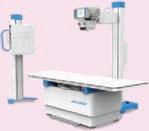




















BUSINESS AVENUES EXPRESS HEALTHCARE EXPRESS HEALTHCARE July2023 29










SILICONETRANSPARENTTUBING M.K.SiliconeProductsPvt.Ltd. fortheQualityConscious…. INDIA QM002 AnISO9001-2015COMPANY CERTIFIED CLEA N ROOM IS08 BlueHeaven E-mail:sales@mksilicone.com 208,HillViewIndustrialPremises, AmrutNagar,Ghatkopar(W),Mumbai-400086,India. Tel.:022-25004576Mob.:9321965968 Serving Since 1997 BUSINESS AVENUES EXPRESS HEALTHCARE July2023 EXPRESS HEALTHCARE 30 To Advertise in Business Avenues Email: rajesh.bhatkal@expressindia.com rbhatkal@gmail.com














BUSINESS AVENUES EXPRESS HEALTHCARE EXPRESS HEALTHCARE July2023 31




BUSINESS AVENUES EXPRESS HEALTHCARE July2023 EXPRESS HEALTHCARE 32 th 29InternationalExhibitionandConference 13–15MARCH2024 BOMBAYEXHIBITIONCENTER MUMBAI,INDIA Poweredby MediaPartner Supportedby Formoreinformation,pleasecontact: AdarshVerma - Tel.:+91(0)1244544507,E-mail:VermaA@md-india.com IVDPavilion&Conference in-vitro DiagnosticsPavilion RehabilitationPavilion MakeinIndiaPavilion SPECIALFEATURES SHOWHIGHLIGHTS 25+ 500+ 16,000m2 EXHIBITAREA EXHIBITORS 15,000+ 60+ VISITORSVISITING COUNTRIES EXHIBITING COUNTRIES 500+ DELEGATES 4 CONFERENCES InternationalConferences DigitalHealthPavilionMTIndiaHealthcareAwards INDIA’SNO.1TRADEFAIRFORHOSPITALS, HEALTHCENTRESANDCLINICS

























BUSINESS AVENUES EXPRESS HEALTHCARE EXPRESS HEALTHCARE July2023 33
HEALTHCARE TRACKER
Labs offering haemostasis testing can support clinicians with patient diagnosis
Srinivas Naidu,Senior Product Manager- Coagulation,Sysmex India Pvt Ltd explains how Sysmex addresses various concerns in haemostasis testing with their latest analyzer, Sysmex

CN- Series
In haemostasis, test results can point out major clinical issues, some of which may be life-threatening if not dealt with swiftly and accurately. For instance, Cardiovascular Disease (CVD) is one of the leading causes of death and disability in the world. And this is not likely to change any time soon, considering the demographics and lifestyle we see today. Like all patients, people with CVD have the best chance of survival when their illness is detected early.
Labs offering haemostasis testing can support clinicians with patient diagnosis. Since confidence in the subsequent clinical decision-making is essential, you need equipment that performs reliably and produces results of consistent, high quality at all times. You need to meet TAT demands and help patients as soon as possible, so the tests have to be performed fast –
even with complex samples that require precise pre-analytical treatment. And as the industry evolves, the spectrum of test requests is increasing too. It’s a challenging
CONTRIBUTOR’S CHECKLIST
● Express Healthcare accepts editorial material for the regular columns and from pre-approved contributors/columnists.
● Express Healthcare has a strict non-tolerance policy towards plagiarism and will blacklist all authors found to have used/referred to previously published material in any form, without giving due credit in the industryaccepted format.
● As per our organisation’s guidelines,we need to keep on record a signed and dated declaration from the author that the article is authored by him/her/them, that it is his/her/their original work,and that all references have been quoted in full where necessary or due acknowledgement has been given.The declaration also needs to state that the article has not been published before and there exist no impediment to our publication.Without this declaration we cannot proceed.
● If the article/column is not an original piece of work, the author/s will bear the onus of taking permission for re-publishing in Express Healthcare.The final decision to carry such republished articles rests with the Editor.
● Express Healthcare’s prime audience is senior management and professionals in the hospital industry. Editorial material addressing this audience would be given preference.
situation.
Unlike other areas of testing sample integrity plays a vital role in the quality of results in hemostasis testing.
So, if an analyzer can identify
erroneous samples, then that would be an ideal analyzer for a respective laboratory.
Sysmex, a leading global player in hemostasis instrumentation and reagents addresses these concerns with their latest analyzer, Sysmex CN- Series.
Sysmex CN-series, takes the reliability and performance of Sysmex CS-series and takes it up to a whole new level.
Sysmex was the first company worldwide to incorporate pre-analytical sample testing and Platelet aggregometry testing in a hemostasis analyzer and our commitment remains the same with the CN-Series also which provides all these and much more.
Sysmex CN-Series comes with a higher throughput thereby lessening the turnaround time and even with the higher throughput the space requirement is very low.

● The articles should cover technology and policy trends and business related discussions.
● Articles by columnists should talk about concepts or trends without being too company or product specific.
● Article length for regular columns: Between 13001500 words.These should be accompanied by diagrams,illustrations,tables and photographs,wherever relevant.
● We welcome information on new products and services introduced by your organisation for our Products sections.Related photographs and brochures must accompany the information.
● Besides the regular columns,each issue will have a special focus on a specific topic of relevance to the Indian market.You may write to the Editor for more details of the schedule.
● In e-mail communications,avoid large document attachments (above 1MB) as far as possible.
● Articles may be edited for brevity,style, relevance.
● Do specify name,designation,company name,department and e-mail address for feedback,in the article.

● We encourage authors to send a short profile of professional achievements and a recent pho-
The dead volumes of samples are very low so that means there are more analyses from lesser volumes.
Sysmex CN-Series identifies sub-optimal samples by employing HIL (Hemolysed, Icteric and Lipemic) testing and Sample volume check, and clot waveform analysis to assess comprehensive hemostasis functions. CN-Series Inhibitor testing is more convenient with the cross-mixing functions.
tograph,preferably in colour,high resolution with a good contrast.
Email your contribution to: viveka.r@expressindia.com viveka.roy3@gmail.com
Editor, Express Healthcare
EXPRESS HEALTHCARE July2023 34
TI Medical: Engineering the future of healthcare

In haemostasis, test results can point out major clinical issues, some of which may be life-threatening if not dealt with swiftly and accurately. For instance, Cardiovascular Disease (CVD) is one of the leading causes of death and disability in the world. And this is not likely to change any time soon, considering the demographics and lifestyle we see today. Like all patients, people with CVD have the best chance of survival when their illness is detected early.
Today, healthcare professionals believe that precision and quality have determined the course of medical advancements, and they face challenges due to lack of precise and highquality medical devices. Seeing this as a major pain point, Murugappa Group through TI Medical embarks on a new mission that aims to transform the landscape of medical devices.
Murugappa Group, a powerhouse of innovation, trust, and excellence. With over 123 years of rich legacy, the group has become a driving force in multiple industries. Founded in 1900, the Rs 74,220 crores Murugappa Group is one of India's leading business conglomerates. Having 29 businesses including ten listed Companies traded in NSE & BSE.
TI Medical, a dynamic joint venture between Tube Investments and Premji Invest, made a significant entrance with their first step by acquiring Lotus Surgicals, a widely recognised name in the medical industry. This strategic move empowers TI Medical to offer a comprehensive range of cutting-edge medical devices, perfectly aligning with the visionary "Make in India, Make for the World" strategy.
In the rapidly evolving healthcare landscape, the demand for a comprehensive onestop solution in the consumable space has become paramount.
With a vision to broaden our horizons and cater to the evolving needs of the healthcare industry, we are excited to announce our ambitious plan to foray into the domains of surgical consumables, medical consumables, and infection control. By expanding our product portfolio in these crucial areas, we aim to provide healthcare professionals with a comprehensive range of high-quality supplies and equipment. Our focus will be on delivering innovative solutions that prioritise patient safety, enhance operational efficiency, and optimise infection prevention protocols. Through strategic partnerships, rigorous research, and a commitment to excellence, we are confident in our ability to make a positive impact in these critical sectors and contribute to advancing healthcare on a broader scale.
At Lotus Surgicals, we take pride in our commitment to consistency, precision, high-end technology, and affordability. Through relentless innovation, extensive research and development, and deep regard for human life and values, we are changing the face of healthcare devices.
Nestled in the quaint valley of Dehradun, our state-of-the-art 60,000 square feet fully automated manufacturing facility is equipped with the latest technology to meet the growing demand for our products. Conforming to class 10,000 standards, we maintain the highest quality standards throughout the production process. Our extensive network spans over 15,000+ hospitals, and our reach continues to expand, with over 32,000+ surgeons placing their trust in our innovative solutions. From bustling metropolises to remote corners of the world, we're proud to serve more than 60+ countries with over 300+ Sales Associates.
Our vision is to establish a
redefine industry standards, improving patient outcomes and enhancing the quality of life. With a steadfast commitment to research and development, we strive to create breakthrough technologies that address unmet medical needs.
As a dynamic organisation, our primary objective is to ensure accessible healthcare for all by offering a comprehensive range of consumable medical devices. With a commitment to excellence, we strive to provide healthcare practitioners and patients with products that not only simplify procedures but also deliver exceptional performance. We acknowledge the transformative power of technology in the healthcare landscape and continuously drive innovation to develop solutions that enhance clinical outcomes and streamline operational processes.
Beyond our commitment to delivering high-quality products, we actively engage in clinical training and education programs. We understand the importance of knowledge and skills development in ensuring optimal patient care. Through these initiatives, we aim to empower healthcare practitioners with the latest techniques, advancements, and best practices, ultimately enhancing surgical outcomes and advancing the field of healthcare as a whole.
organization, evolving from a mere vendor to a trusted and valued solution provider.
Healthcare professionals require reliable access to a wide range of high-quality consumable medical devices that meet their specific needs across various specialties and procedures. Having a single source for these products eliminates the hassle of dealing with multiple suppliers, streamlining procurement processes and reducing administrative burdens. That's precisely where we come into play.
The healthcare sector eagerly seeks to bridge the gap between quality and affordable healthcare services. By offering cost-effective yet exceptional healthcare services, we can positively impact the lives of countless individuals and improve overall population health.
Addressing the need for safe, quality, and affordable healthcare for all requires a collaborative effort between healthcare providers and the medical technology (MedTech) sector. By joining forces, they can combine expertise, resources, and innovation to develop sustainable solutions.
prominent global footprint in the medical devices industry by harnessing the power of innovation, research, and development. We aspire to be recognized as a pioneering force, leading the way in creating cutting-edge solutions that revolutionize healthcare practices worldwide. Through continuous innovation, we aim to set new benchmarks and
Lotus Surgical stands as a reputable provider of a comprehensive range of surgical devices, specialising in Cardiovascular, Endo Surgery, Orthopaedics, Gynaecology, Oncology, and General Surgery. With great pride, we offer cuttingedge solutions that meet the diverse needs of healthcare professionals.
Today, our products are making a significant impact, reaching over 25,000 hospitals across more than 60 countries. This achievement reflects a notable transition within our
We are a dynamic organisation dedicated to providing healthcare for everyone through our extensive line of consumable medical devices, giving ease and excellence to healthcare practitioners and patients. We recognise technology's transformational impact in healthcare.
Lotus Surgicals' acquisition marks the exciting beginning of our transformative journey, but it's only the first step of many on the path to our vision. We recognise that we have a long way to go, and we are committed to pushing boundaries, innovating relentlessly, and surpassing expectations. Through this joint venture, our goal is to create and deliver affordable and high-quality medical devices that save lives.
July2023 EXPRESS HEALTHCARE 35
Dinesh Lodha,MD & Group CEO,TI Medical & Lotus Surgicals emphasises that with a vision to broaden company’s horizons and cater to the evolving needs of the healthcare industry,we are excited to announce our ambitious plan to foray into the domains of surgical consumables, medical consumables,and infection control
By expanding our product portfolio in these crucial areas,we aim to provide healthcare professionals with a comprehensive range of highquality supplies and equipment
Compact X-raymachines have revolutionised the wayveterinarymedical practitioners treat animals
Satheesh K,Marketing Specialist at ALERIO X-RAYS,explains about Alerio smart 1600 which provides high-quality X-ray imaging,allowing veterinarians to accurately diagnose various conditions such as fractures,tumors and foreign objects in animals

Indian veterinaryscene
The Indian veterinary sector is constantly evolving and improving. In particular, veterinary diagnosis has witnessed significant development. It relies on various tools and equipment for radiography, ultrasound, blood analysis and microbiological tests. In the past, veterinary diagnosis in India was limited due to the lack of infrastructure, technological advancement and diagnostic tools. These diagnostic tools were highly expensive and only a handful of veterinary medical practitioners had access to the latest or most advanced equipment.
Impact of compact X-rays
Despite that, things have changed for the better and the introduction of compact X-ray machines has had an evident impact on veterinary diagnosis. Compact X-ray machines have revolutionised the way veterinary medical practitioners diagnose and treat animals. These portable X-ray machines like Alerio Smart 1600 are smaller in size and are notably much cheaper compared to any traditional X-ray machines. These key factors make them easier to acquire, effortless to transport, simpler to set up and friendly to use. Compact Xray machines are crucial in urban settings like cities and townships where there has been an increase in the adoption of companion animals and pet ownership and also equally important in remote settings like rural villages and forest areas where access to veterinary clinics or hospitals are limited.
Alerio Smart 1600
Alerio Smart 1600 is battery powered. It's high frequency
Alerio Smart 1600 is battery powered.It's high frequency DC inverter produces crisp and clear diagnostic X-ray images at lower exposure settings. It also has an inbuilt collimator and a simple user friendly interface allowing flexible exposure settings

DC inverter produces crisp and clear diagnostic X-ray images at lower exposure settings. It also
has an inbuilt collimator and a simple user friendly interface allowing flexible exposure settings. This compact X-ray unit is lightweight. Weighing less than 9kg, It can be mobilised with ease to any location and it comes with an inbuilt rechargeable battery. This compact highly mobile unit comes with a carrying case.
Performs on-site
Alerio smart 1600 provides high-quality X-ray imaging, allowing veterinarians to accurately diagnose various conditions such as fractures, tumors and foreign objects in animals. This tool enables more veterinary practitioners to perform on-site diagnostics, eliminating the need for referrals and reducing waiting times for diag-
1600 are made in India, A brand like ALERIO X-Rays is AERB approved and ISO safety certified. They are manufactured inhouse, designed and developed keeping simplicity, versatility and economy in mind. They are cost-effective in terms of initial investment and service maintenance. They also offer a 2-year product and service warranty along with lifetime onsite support in India. This affordability, safety and after sales support factor enables veterinary clinics and practitioners alike, both in urban and rural settings to incorporate advanced diagnostic capabilities into their practice, ultimately benefiting a larger number of animals.
Affordable,accessible & accurate
To conclude, the introduction of compact X-ray machines in the Indian veterinary space has significantly improved the state of veterinary diagnosis. It has enhanced accessibility, accuracy, and affordability, leading to better healthcare outcomes for animals.
To experience the power of a compact X-ray Machine like ALERIO Smart 1600 firsthand you can pay a visit to Medicall Expo in Chennai on the 28th, 29th and 30th of this month where ALERIO brand showcases their X-Ray products. You can also book a demo by call @ 74183 95551 or through our website www.alerio.in
EXPRESS HEALTHCARE July2023 36 HEALTHCARE
TRACKER
HEALTHCARE TRACKER
BPLMedical Technologies' wide range cater to an arrayof needs
BPLoffers three broad range of X-rays,classified as: Diagnostic X-ray,Digital Radiography,and Image-Guided Surgery
X-ray plays a vital role in medical diagnostics, enabling healthcare professionals to identify and diagnose various anatomical conditions. To ensure optimal patient outcomes, it is important for medical professionals to incorporate reliable and latest medical equipment in their practice. BPL Medical Technologies Pvt. Ltd., at the forefront of innovation, constantly strives to integrate the latest technological advancements into their X-ray range for their customers. These systems incorporate state-of-the-art components and software, enabling healthcare providers to leverage advanced imaging techniques such as digital radiography, further improving diagnostic accuracy.
Right from small clinics to large hospitals, BPL Medical Technologies' wide range of Xray machines come with advanced imaging systems and technology that cater to an array of needs, all proudly made in India in their state-of-theart facility. BPL offers three broad range of X-rays, classified as: Diagnostic X-ray, Digital Radiography, and ImageGuided Surgery. These X-ray systems provide accurate and detailed images, assisting healthcare professionals in making well-informed diagnoses by leveraging the latest imaging technology. With high-resolution imaging capabilities, the machines ensure to capture every subtle detail precisely, allowing professionals in identifying even the most intricate anatomical structures with high level of clarity.
BPL MedTech offers an impressive range of fixed, mobile, and digital X-ray units designed for modern day clinical settings and routine
Recognising the importance of patient comfort and safety,all of BPL’s X-ray solutions include several operator and patient-centric features
examinations with userfriendly features and a smaller footprint. With their wide range of systems, healthcare professionals can choose from high frequency or line frequency models with options to control exposure time, dose, and safety parameters.
BPL HRAD 32 (DR-1
Prime Series) is a digital radiography system for whole
body general radiography applications. The system is equipped with HF X-Ray generator, and X-Ray tube, which is mounted on a floor mount stand, a large 17”x17” CsI scintillation based FPD embedded in detector housing. The system is available with a mobile table & a transparent tabletop.
Some of the key features includes:
enables display of the entire spine or lower extremities on a single image.

◆ DICOM 3.0 Connectivity, HIS/HMS/RIS/PACS Compatible
Recognising the importance of patient comfort and safety, all of BPL’s X-ray solutions include several operator and patient-centric features. The ergonomic design and user-friendly interface prioritise ease of use for healthcare professionals, enhancing workflow efficiency, along with minimal radiation exposure while maintaining image quality, ensuring the well-being of patients as well during diagnostic procedures.
BPL Medical Technologies takes great pride in being an Indian home-grown company, manufacturing several medical solutions, including the Xray range, in their state-ofthe-art manufacturing facility in Palakkad, Kerala. The company is all set to grow their manufacturing capabilities further with an additional factory in Bangalore, Karnataka by August 2023. Their values strongly align with the Indian Government’s vision of Atma-Nirbhar Bharat (self-reliant India) in the healthcare space.
◆ Powered by world class HFG technology for proven quality & reliability.
◆ 17x17” Latest Generation IGZO Panel
◆ 140 μ Pixel Pitch with 3kx3k Matrix
◆ TRUVIEW®ART: Advanced image Reconstruction Technology
◆ DEPAI™: Deep Learning based Image Processing
◆ Image stitching software
With a commitment to quality and precision, the company adheres to stringent manufacturing standards to ensure that their products meet international benchmarks. In addition, their nation-wide presence ensures that they remain committed throughout their customer’s journey of healthcare excellence. This emphasis on manufacturing and service excellence has earned BPL Medical Technologies a reputation for offering world-class solutions in India.
July2023 EXPRESS HEALTHCARE 37
HEALTHCARE TRACKER

UIH and Medikabazaar: Setting new benchmarkin India Medical Imaging Industry
The collaboration has resulted in the successful of over 500 orders of AI enabled MRI,CT,and Digital PET-CTequipment,enabling healthcare institutions across India to enhance patient care and improve diagnostic capabilities
United Imaging Healthcare (UIH) and Medikabazaar are thrilled to mark the completion of their third year of collaboration in India. Over the past three years, UIH and Medikabazaar have worked hand in hand to revolutionise the medical imaging industry in India, setting new benchmarks for excellence and accessibility.
Since the inception of their partnership in 2020, United Imaging Healthcare and Medikabazaar have achieved remarkable milestones together. The collaboration has resulted in the successful of over 500 orders of AI enabled MRI, CT, and Digital PET-CT equipment, enabling healthcare institutions across India to enhance patient care and improve diagnostic capabilities.
One of the key achievements of the partnership has been the widespread presence of UIH’s state-of-the-art solutions across the country. Through Medikabazaar's extensive network and
Since the inception of their partnership in 2020, United Imaging Healthcare and Medikabazaar have achieved remarkable milestones together
distribution capabilities, UIH's advanced medical imaging systems, including MRI, CT, and Digital PET-CT scanners, have reached healthcare facilities in even the most remote corners of India. This has significantly contributed to bridging the healthcare divide and bringing world-class diagnostic tools within reach of millions of patients.
With highly competitive technologies and ground breaking products, United Imaging Healthcare has steadily increased its brand influence and market share worldwide. Currently, more than 23,600 United Imaging products are in service across 10,700 hospitals and research institutions in 59 countries and regions worldwide, including China, the U.S., Europe, Japan, the Middle East,
India, Southeast Asia, Africa, and South America.
To ensure seamless implementation and exceptional customer experience, United Imaging Healthcare and Medikabazaar have established a dedicated service team. Comprising highly trained professionals and technical experts, the service team is readily available to provide comprehensive support, including installation, maintenance, and training, thereby maximising the value and effectiveness of UIH's cutting-edge medical equipment.
UIH has secured a spot among the top three positions is truly impressive. Despite being a relatively new player in the field, UIH has swiftly gained acknowledgment for its state-of-the-art radiology
products and solutions. United Imaging's dedication to providing comprehensive, all-in-one configurations along with assured upgrades has catapulted them to the forefront of the industry.
Speaking about the successful partnership, Dr Jusong Xia, PresidentofInternationalBusiness at United Imaging Healthcare, expressed their enthusiasm, stating, "We are thrilled to celebrate our second year of partnership with Medikabazaar. Together, we have been able to make a significant impact in the healthcare landscape of India. Our collaboration has not only expanded the accessibility of advanced medical imaging solutions but also strengthened the overall healthcare infrastructure. We look forward to continued
success in the coming years."
Medikabazaar's CEO & Founder, Vivek Tiwari, also highlighted the significance of the partnership, saying, "United Imaging Healthcare has been a valuable partner in our mission to transform healthcare delivery in India. By providing healthcare institutions with the latest medical imaging technology, we have enabled them to provide accurate diagnoses and improve patient outcomes. We are proud of the milestones we have achieved together and excited about the future prospects of our collaboration."
As United Imaging Healthcare and Medikabazaar enter the third year of their partnership, they remain committed to driving innovation, empowering healthcare providers, and advancing healthcare accessibility across India. With a shared vision of revolutionising healthcare, both organisations are poised to deliver even greater value and impact in the years to come.
EXPRESS HEALTHCARE July2023 38
Innovate.Illuminate.Initiate.




Intelligenthealthcare madeeasy ERBISENGINEERINGCOMPANYLIMITED 39SecondMainRoad,RajaAnnamalaipuram,Chennai-600028.Tel:04442961400MailID: info@erbismedical.com ©CanonMedicalSystemsCorporation2022.Allrightsreserved. Pleasecontactyourlocalsalesrepresentativetolearnmore. https://global.medical.canon/ LearnmoreaboutAquilionONEPRISMEdition
PoweredbythreeCanonMedicalAltivitybrand technologies—PreciseIQEngine(PIQE),Advanced intelligentClear-IQEngine(AiCE),andDeepLearning SpectralReconstruction—AquilionONE/PRISM Editionisdesignedfordeepintelligence. PRISMEdition Advancedintelligent Clear-IQEngine(AiCE)

REGD.WITH RNI NO.MAHENG/2007/22045,POSTAL REGD.NO.MCS/162/2022 – 24,PUBLISHED ON 8TH EVERY MONTH, POSTED ON 14TH,15TH,16TH EVERY MONTH,POSTED AT MUMBAI PATRIKA CHANNEL SORTING OFFICE,MUMBAI – 400001



































































































































































